Category: Recommended Reading
By Canceling Richard Dawkins, the American Humanist Association Has Betrayed Its Values
Robby Soave in Reason:
 Last week, the American Humanist Association (AHA) stripped British author Richard Dawkins of his 1996 Humanist of the Year award after he made a comment on Twitter that offended some in the transgender community.
Last week, the American Humanist Association (AHA) stripped British author Richard Dawkins of his 1996 Humanist of the Year award after he made a comment on Twitter that offended some in the transgender community.
“Regrettably, Richard Dawkins has over the past several years accumulated a history of making statements that use the guise of scientific discourse to demean marginalized groups, an approach antithetical to humanist values,” said the AHA. “His latest statement implies that the identities of transgender individuals are fraudulent, while also simultaneously attacking Black identity as one that can be assumed when convenient.”
This is nonsense: Dawkins had raised a point that it is perfectly worthy of discussion, in accordance with the rationalist philosophy of the humanist movement. But it would also have been ridiculous for the organization to punish Dawkins even if the remark had been offensive, given that many of its past awardees have espoused controversial views, and even said insensitive things on Twitter.
More here.
The Counterfactual Theory of Causation
https://www.youtube.com/watch?v=g3l-17cGW6E
Human Life As Technology From Greek Mythology To Frankenstein
Adrienne Mayor at Lapham’s Quarterly:
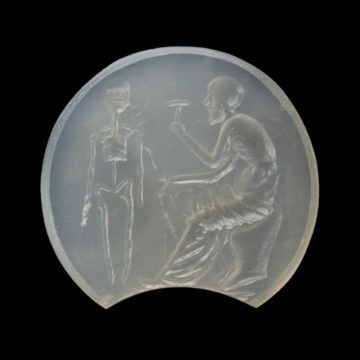 How long have we been imagining artificial life? A remarkable set of ancient Greek myths and art shows that more than 2,500 years ago, people envisioned how one might fabricate automatons and self-moving devices, long before the technology existed. Essentially some of the earliest-ever science fictions, these myths imagined making life through what could be called biotechne, from the Greek words for life (bio) and craft (techne). Stories about the bronze automaton Talos, the artificial woman Pandora, and other animated beings allowed people of antiquity to ponder what awesome results might be achieved if only one possessed divine craftsmanship. One of the most compelling examples of an ancient biotechne myth is Prometheus’ construction of the first humans.
How long have we been imagining artificial life? A remarkable set of ancient Greek myths and art shows that more than 2,500 years ago, people envisioned how one might fabricate automatons and self-moving devices, long before the technology existed. Essentially some of the earliest-ever science fictions, these myths imagined making life through what could be called biotechne, from the Greek words for life (bio) and craft (techne). Stories about the bronze automaton Talos, the artificial woman Pandora, and other animated beings allowed people of antiquity to ponder what awesome results might be achieved if only one possessed divine craftsmanship. One of the most compelling examples of an ancient biotechne myth is Prometheus’ construction of the first humans.
Prometheus was first introduced in Hesiod’s poems, written between 750 and 650 bc, and about two dozen Greek and Latin writers retold and embellished his story. From earliest times Prometheus was seen as the benefactor of primitive humankind.
more here.
Tuesday Poem
Your Logic Frightens Me Mandela
Your logic frightens me, Mandela,
Your logic frightens me. Those years
Of dreams, of time accelerated in
Visionary hopes, of savouring the task anew,
The call, the tempo primed
To burst in supernovae round a “brave new world”!
Then stillness. Silence. The world closes round
Your sole reality; the rest is… dreams?
Your logic frightens me.
How coldly you disdain legerdemains!
“Open Sesame” and—two decades’ rust on hinges
Peels at touch of a conjurer’s wand?
White magic, ivory-topped black magic wand,
One moment wand, one moment riot club
Electric cattle prod and club or sjambok
Tearing flesh and spilling blood and brain?
This bag of tricks, whose silk streamers
Turn knotted cords to crush dark temples?
A rabbit punch sneaked beneath the rabbit?
Doves metamorphosed in milk-white talons?
Not for you the olive branch that sprouts
Gun muzzles, barbed-wire garlands, tangled thorns
To wreathe the brows of black, unwilling christs.
Your patience grows inhuman, Mandela.
Do you grow food? Do you make friends
Of mice and lizards? Measure the growth of grass
For time’s unhurried pace?
Are you now the crossword puzzle expert?
The Grace of Teffi
Robert Chandler at The Paris Review:
 Born in 1872, Teffi was a contemporary of Alexander Blok and other leading Russian Symbolists. Her own poetry is derivative, but in her prose she shows a remarkable gift for grounding Symbolist themes and imagery in the everyday world. “The Heart” is entirely realistic and at times even gossipy—yet the story is permeated throughout with Christian symbolism relating to fish. In “A Quiet Backwater,” she achieves a still more successful synthesis of the heavenly and the earthly. Toward the end of this seven-page story a laundress gives a long disquisition on the name days of various birds, insects, and animals. The mare, the bee, the glowworm—she tells a young visitor—all have their name days. And so does the earth herself: “And the Feast of the Holy Ghost is the name day of the earth herself. On this day, no one dairnst disturb the earth. No diggin, or sowin—not even flower pickin, or owt. No buryin t’ dead. Great sin it is, to upset the earth on ’er name day. Aye, even beasts understand. On that day, they dairnst lay a claw, nor a hoof, nor a paw on the earth. Great sin, yer see.” In a key poem—almost a manifesto—of French Symbolism, Charles Baudelaire interprets the whole world as a web of mystical “correspondences.” In a less grandiose way, Teffi conveys a similar vision. She was, I imagine, delighted by the paradox of the earth’s name day being the Feast of the Holy Spirit—not, as one might expect, the feast of a saint associated with some activity like plowing.
Born in 1872, Teffi was a contemporary of Alexander Blok and other leading Russian Symbolists. Her own poetry is derivative, but in her prose she shows a remarkable gift for grounding Symbolist themes and imagery in the everyday world. “The Heart” is entirely realistic and at times even gossipy—yet the story is permeated throughout with Christian symbolism relating to fish. In “A Quiet Backwater,” she achieves a still more successful synthesis of the heavenly and the earthly. Toward the end of this seven-page story a laundress gives a long disquisition on the name days of various birds, insects, and animals. The mare, the bee, the glowworm—she tells a young visitor—all have their name days. And so does the earth herself: “And the Feast of the Holy Ghost is the name day of the earth herself. On this day, no one dairnst disturb the earth. No diggin, or sowin—not even flower pickin, or owt. No buryin t’ dead. Great sin it is, to upset the earth on ’er name day. Aye, even beasts understand. On that day, they dairnst lay a claw, nor a hoof, nor a paw on the earth. Great sin, yer see.” In a key poem—almost a manifesto—of French Symbolism, Charles Baudelaire interprets the whole world as a web of mystical “correspondences.” In a less grandiose way, Teffi conveys a similar vision. She was, I imagine, delighted by the paradox of the earth’s name day being the Feast of the Holy Spirit—not, as one might expect, the feast of a saint associated with some activity like plowing.
more here.
The Challenges of Animal Translation
Philip Ball in The New Yorker:
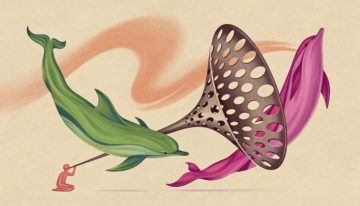 Disney’s 2019 remake of its 1994 classic “The Lion King” was a box-office success, grossing more than one and a half billion dollars. But it was also, in some ways, a failed experiment. The film’s photo-realistic, computer-generated animals spoke with the rich, complex voices of actors such as Donald Glover and Chiwetel Ejiofor—and many viewers found it hard to reconcile the complex intonations of those voices with the feline gazes on the screen. In giving such persuasively nonhuman animals human personalities and thoughts, the film created a kind of cognitive dissonance. It had been easier to imagine the interiority of the stylized beasts in the original film. Disney’s filmmakers had stumbled onto an issue that has long fascinated philosophers and zoologists: the gap between animal minds and our own. The dream of bridging that divide, perhaps by speaking with and understanding animals, goes back to antiquity. Solomon was said to have possessed a ring that gave him the power to converse with beasts—a legend that furnished the title of the ethologist Konrad Lorenz’s pioneering book on animal psychology, “King Solomon’s Ring,” from 1949. Many animal lovers look upon the prospect of such communication with hope: they think that, if only we could converse with other creatures, we might be inspired to protect and conserve them properly. But others warn that, whenever we attempt to communicate with animals, we risk projecting our ideas and preconceptions onto them. We might do this simply through the act of translation: any human language constrains the repertoire of things that can be said, or perhaps even thought, for those using it.
Disney’s 2019 remake of its 1994 classic “The Lion King” was a box-office success, grossing more than one and a half billion dollars. But it was also, in some ways, a failed experiment. The film’s photo-realistic, computer-generated animals spoke with the rich, complex voices of actors such as Donald Glover and Chiwetel Ejiofor—and many viewers found it hard to reconcile the complex intonations of those voices with the feline gazes on the screen. In giving such persuasively nonhuman animals human personalities and thoughts, the film created a kind of cognitive dissonance. It had been easier to imagine the interiority of the stylized beasts in the original film. Disney’s filmmakers had stumbled onto an issue that has long fascinated philosophers and zoologists: the gap between animal minds and our own. The dream of bridging that divide, perhaps by speaking with and understanding animals, goes back to antiquity. Solomon was said to have possessed a ring that gave him the power to converse with beasts—a legend that furnished the title of the ethologist Konrad Lorenz’s pioneering book on animal psychology, “King Solomon’s Ring,” from 1949. Many animal lovers look upon the prospect of such communication with hope: they think that, if only we could converse with other creatures, we might be inspired to protect and conserve them properly. But others warn that, whenever we attempt to communicate with animals, we risk projecting our ideas and preconceptions onto them. We might do this simply through the act of translation: any human language constrains the repertoire of things that can be said, or perhaps even thought, for those using it.
In 1974, the philosopher Thomas Nagel published a seminal paper called “What Is It Like to Be a Bat?” Bat life, Nagel argued, is so profoundly different from human life that we can never truly know the answer to that question. Our understandings are shaped by our human concepts; the only way to know what it is like to be a bat is to be a bat, and to have bat concepts. Even if we don’t or can’t know exactly what it’s like to be a bat, we can have some understanding of how bat minds work; we can understand that bat life is lived aloft, sometimes upside down, and partly through echolocation. Still, in Nagel’s view, something is left out: the experience itself. As the philosopher Ludwig Wittgenstein famously put it, if a lion could talk, we could not understand him—our human minds would not share the sensory and conceptual landscape that lion-talk would express.
More here.
Large-scale origami locks into place under pressure
Sigrid Adriaenssens in Nature:
 It might seem surprising that origami, the ancient Japanese art of paper folding, is an integral part of engineering. However, origami structures can be folded up compactly and deployed at the nano- and macroscales seemingly without effort. They are therefore well suited for a wide range of applications, including robotics1, arrays of solar panels2 and engineered structures known as metamaterials3. Writing in Nature, Melancon et al.4 report triangular origami facets that snap into 3D shapes when filled with a pressurized fluid. The authors’ work provides a new method for designing large origami enclosures that can be deployed and locked into shape through inflation.
It might seem surprising that origami, the ancient Japanese art of paper folding, is an integral part of engineering. However, origami structures can be folded up compactly and deployed at the nano- and macroscales seemingly without effort. They are therefore well suited for a wide range of applications, including robotics1, arrays of solar panels2 and engineered structures known as metamaterials3. Writing in Nature, Melancon et al.4 report triangular origami facets that snap into 3D shapes when filled with a pressurized fluid. The authors’ work provides a new method for designing large origami enclosures that can be deployed and locked into shape through inflation.
In engineering, a deployable structure is one that can change shape in a way that greatly alters its size — large-scale examples include scissor lifts and bouncy castles. Conventional deployable structures are transformed into a larger shape through the extension of linkages (as in scissor lifts) or by inflation (bouncy castles). Both types of structure are then secured into their new shape by an external agent: a lock and the sustained application of air pressure, respectively. However, neither can secure themselves.
More here.
Sunday, April 25, 2021
Activist, Professor, Politician, Aesthete — the many contradictions of Edward Said
Jackson Arn in Forward:
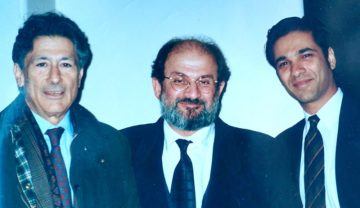
You could read any of Edward Said’s books, but you couldn’t take them home with you. Looking back, this was obviously a metaphor for something or other. At the time it seemed like a simple-enough fact—but then, I was only a freshman.
The Edward Said Reading Room opened in the spring of 2011, eight years after Said died of leukemia and a few months before I started college at Columbia. I liked it because it was small enough to pace through without losing sight of my laptop, and because the late professor had had fantastic taste in books. There were about 2,000 of them on the shelves, all from his personal collection and spanning most of his favorite subjects: Arabic modernism, classical music, the Frankfurt School, the two-state solution, the 19th-century realist novel. If book collections are always self-portraits, this was the grandest self-portrait I’d ever seen. So, no: students weren’t allowed to check these books out of Butler Library — that would have chipped the paint.
Said taught literature at Columbia for 40 years. During my four as an undergrad, he came up so often it felt like he still did.
More here.
DNA of Giant ‘Corpse Flower’ Parasite Surprises Biologists
Christie Wilcox in Quanta:
 They are invisible at first. In their Southeast Asian forest homes, they grow as thin strands of cells, foreign fibers sometimes more than 10 meters long that weave through the vital tissues of their vine hosts, siphoning nourishment from them. Even under a microscope, the single-file lines of cells are nearly indistinguishable from the vine’s own. They seem more like a fungus than a plant.
They are invisible at first. In their Southeast Asian forest homes, they grow as thin strands of cells, foreign fibers sometimes more than 10 meters long that weave through the vital tissues of their vine hosts, siphoning nourishment from them. Even under a microscope, the single-file lines of cells are nearly indistinguishable from the vine’s own. They seem more like a fungus than a plant.
But when the drive to breed awakens them, the members of the Rafflesiaceae family erupt as immense, stemless, rubbery red “corpse flowers” covered in polka dots, with a putrid smell like rotting meat designed to draw pollinating carrion flies. The blooms of one species, Rafflesia arnoldii, are the largest flowers in the world — each one can be more than a meter across and weigh a whopping 10 kilograms, roughly the heft of a toddler.
More than a decade ago, Rafflesiaceae parasites caught the eye of Jeanmaire Molina, an evolutionary plant biologist at Long Island University in Brooklyn, who wondered if their genomes were as bizarre as their outward forms.
More here.
Redesigning AI
Daron Acemoglu in the Boston Review:
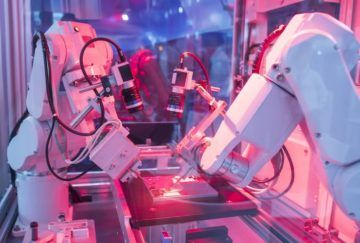 Artificial Intelligence (AI) is not likely to make humans redundant. Nor will it create superintelligence anytime soon. But like it or not, AI technologies and intelligent systems will make huge advances in the next two decades—revolutionizing medicine, entertainment, and transport; transforming jobs and markets; enabling many new products and tools; and vastly increasing the amount of information that governments and companies have about individuals. Should we cherish and look forward to these developments, or fear them?
Artificial Intelligence (AI) is not likely to make humans redundant. Nor will it create superintelligence anytime soon. But like it or not, AI technologies and intelligent systems will make huge advances in the next two decades—revolutionizing medicine, entertainment, and transport; transforming jobs and markets; enabling many new products and tools; and vastly increasing the amount of information that governments and companies have about individuals. Should we cherish and look forward to these developments, or fear them?
There are reasons to be concerned. Current AI research is too narrowly focused on making advances in a limited set of domains and pays insufficient attention to its disruptive effects on the very fabric of society. If AI technology continues to develop along its current path, it is likely to create social upheaval for at least two reasons. For one, AI will affect the future of jobs. Our current trajectory automates work to an excessive degree while refusing to invest in human productivity; further advances will displace workers and fail to create new opportunities (and, in the process, miss out on AI’s full potential to enhance productivity). For another, AI may undermine democracy and individual freedoms.
More here.
The Best Postcolonial Literature, recommended by Anjuli Fatima Raza Kolb
Cal Flyn in Five Books:
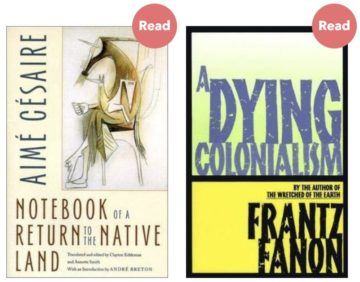 Postcolonial literature brings together writings from formerly colonised territories, allowing commonalities across disparate cultures to be identified and examined. Here, the University of Toronto academic Anjuli Fatima Raza Kolb recommends five key works that explore philosophical and political questions through allegory, personal reflection and powerful polemic.
Postcolonial literature brings together writings from formerly colonised territories, allowing commonalities across disparate cultures to be identified and examined. Here, the University of Toronto academic Anjuli Fatima Raza Kolb recommends five key works that explore philosophical and political questions through allegory, personal reflection and powerful polemic.
What is postcolonial literature and why should we read it?
There are two separate but connected fields that I’m drawing these postcolonial books from.
First, there’s the intuitive definition of postcolonial literature, which is basically just literary work produced in formerly colonised nations by the people who live there. Already you can tell that this is a complicated category – is Albert Camus a postcolonial writer because he was an Algerian Pied-Noir? His siting in Algeria is as important as his identification with the French canon. So ‘postcolonial writing’ crumbles at the slightest touch when we use geography and history in order to define it.
What’s more useful to me is thinking about postcolonialism not as a historical definition or geographic category, but as a method—an approach that is explicitly about the liberatory politics of oppressed peoples. So I’m going to talk today about books that I would put in both camps at once.
More here.
Sunday Poem
—Untitled
The moonlight shining through the high branches
All the poets say is more
Than the moonlight shining through the high branches.
But to me, not knowing what I think,
What the moonlight shining through the high branches
Is, apart from being
The moonlight shining through the high branches,
Is just that,
The moonlight shining through the high branches.
by Fernando Pessoa
from The Complete Works of Alberto Caeiro
New Directions Paperbooks, 2020
translation from the Portuguese by Margaret Jull Costa & Patricio Ferrari
Harpies, sirens, and other ‘nasty’ women: Going beneath misogyny
Barbara Spindel in The Christian Science Monitor:
 In high school, one of author Jess Zimmerman’s Internet usernames was Medusa. A self-described mythology nerd, her childhood copy of “D’Aulaires’ Book of Greek Myths” was well-worn. But as she recalls in her scorching collection of essays, “Women and Other Monsters: Building a New Mythology,” she particularly identified with the snake-haired creature whose power originated in ugliness: The mere sight of Medusa could turn a man to stone. As a teenager who was profoundly insecure about her looks, Zimmerman writes that calling herself Medusa was “an attempt to recuse myself from the game of human attraction before anyone pointed out that I’d already lost.”
In high school, one of author Jess Zimmerman’s Internet usernames was Medusa. A self-described mythology nerd, her childhood copy of “D’Aulaires’ Book of Greek Myths” was well-worn. But as she recalls in her scorching collection of essays, “Women and Other Monsters: Building a New Mythology,” she particularly identified with the snake-haired creature whose power originated in ugliness: The mere sight of Medusa could turn a man to stone. As a teenager who was profoundly insecure about her looks, Zimmerman writes that calling herself Medusa was “an attempt to recuse myself from the game of human attraction before anyone pointed out that I’d already lost.”
Mythology is rife with hideous female creatures. Many of them, like Medusa, have the face of a woman but other grotesque, unnatural body parts. The Sirens are half bird, half woman; Scylla’s lower half is a mass of snarling dogs; the Sphinx has the body of a lion and the wings of a bird. All of them pose grave dangers to male heroes.
That’s not the only thing they have in common. “All the stories about monstrous women, about creatures who are too gross, too angry, too devious, too grasping, too smart for their own good, are stories told by men,” Zimmerman notes, citing Ovid, Homer, Virgil, and Sophocles. They were intended to be cautionary tales, warning women not to overreach, but the author wonders what would happen if women were to stop reading them as warnings and instead embrace them as aspirations.
More here.
India’s massive COVID surge puzzles scientists
Smriti Mallapaty in Nature:
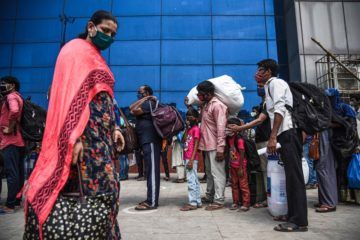 The pandemic is sweeping through India at a pace that has staggered scientists. Daily case numbers have exploded since early March: the government reported 273,810 new infections nationally on 18 April. High numbers in India have also helped drive global cases to a daily high of 854,855 in the past week, almost breaking a record set in January. Just months earlier, antibody data had suggested that many people in cities such as Delhi and Chennai had already been infected, leading some researchers to conclude that the worst of the pandemic was over in the country.
The pandemic is sweeping through India at a pace that has staggered scientists. Daily case numbers have exploded since early March: the government reported 273,810 new infections nationally on 18 April. High numbers in India have also helped drive global cases to a daily high of 854,855 in the past week, almost breaking a record set in January. Just months earlier, antibody data had suggested that many people in cities such as Delhi and Chennai had already been infected, leading some researchers to conclude that the worst of the pandemic was over in the country.
Researchers in India are now trying to pinpoint what is behind the unprecedented surge, which could be due to an unfortunate confluence of factors, including the emergence of particularly infectious variants, a rise in unrestricted social interactions, and low vaccine coverage. Untangling the causes could be helpful to governments trying to suppress or prevent similar surges around the world. European countries such as France and Germany are also currently experiencing large outbreaks relative to their size, and nations including Brazil and the United States are reporting high infection rates at around 70,000 a day. But India’s daily totals are now some of the highest ever recorded for any country, and are not far off a peak of 300,000 cases seen in the United States on 2 January.
More here.
Al Young (1939 – 2021)
Shock G (1963 – 2021)
Les McKeown (1955 – 2021)
Saturday, April 24, 2021
Marshall Sahlins (1930–2021)

Keir Martin and Theo Rakopoulos in Jacobin:
Marshall Sahlins, who passed away at ninety on April 5, was not only the most notable anthropological writer of his generation; he was also a profoundly radical — and influential — thinker with a genuine commitment to political action.
There are many in the academy who fear that political engagement dilutes or undermines the purity of theoretical reflection. Sahlins’s life and work stands as a clear corrective to that position. Throughout his career, he was motivated by his opposition to oppression wherever he saw it, be it toward marginalized populations targeted by economic and military expansionism or toward academic communities threatened with the curtailment of their intellectual expression.
It is this commitment that underpinned so much of his pioneering theoretical work, such as his critique of the universal application of neoclassical economics in Stone Age Economics. That collection of essays marks one of the most powerful challenges on record to the assumed natural universality of the allegedly rational economic actor that haunts economic textbooks.
Sahlins was prolific. Apart from many articles, he authored some nineteen books, some of which have profoundly influenced the way we think anthropologically, and also more generally in the social sciences. His analysis inspired a wide range of radical thinkers, including left and post-left anarchists. The ecological neo-primitivist John Zerzan owed much to Sahlins (“my single most important influence”), while Hakim Bey has repeatedly cited “The Original Affluent Society” as the major inspiration for his thinking.
More here.
Killing the Priest-King: Addressing Egalitarianism in the Indus Civilization
 Adam S. Green in the Journal of Archaeological Research (h/t Jain Family Institute):
Adam S. Green in the Journal of Archaeological Research (h/t Jain Family Institute):
The archaeologists who first investigated the Indus civilization thought it diverged sharply from contemporary societies in Egypt and Mesopotamia (Marshall 1931, p. xi). For nearly a century, archaeologists have made a concerted effort to close this gap and make the Indus seem more “normal” in comparison with other complex societies. This is especially true with respect to inequality—specifically, stratification in the distribution of wealth and hierarchies of political power. In my view, these efforts have been largely unsuccessful. Marshall’s observation was basically correct; attempts to refute it have been based on the theoretical assumption that all social complexity entails stratified social relations, rather than a critical interpretation of the empirical evidence. I argue that the widespread distribution of production activities and wealth in Indus cities indicates that the stratification of wealth and power, particularly in the hands of a ruling class who monopolized resources and dictated the production activities of everyone else, was absent from the Indus civilization.
Indus cities (c. 2600–1900 BC) were expansive and planned, with large-scale architecture and sophisticated early technologies—writing, metallurgy, weights and measures, and seals—that matched those from contemporaneous societies in Egypt and Mesopotamia. And yet, it has long been noted that Indus cities lack the tombs, palaces, and aggrandizing art that characterize other early complex societies (e.g., Fairservis 1967). These lines of evidence are essential to the comparative study of complex societies and particularly to the analysis of past inequalities in wealth and power (e.g., Feinman 1995; Feinman and Marcus 1998; Smith 2012). Their absence in the Indus suggests that the forms of inequality that we would expect to find if a class of ruling nobles managed society were limited or absent in Indus cities. Given that complex societies have often been defined by the presence of such stratification (e.g., Trigger 2003, p. 46), the perception that the absence of a ruling class in the Indus civilization risked its omission from comparative debates about the emergence of social complexity gained ground. In response, there arose an implicit argument that the Indus was indeed exceptional, not because it lacked a ruling class, but because to fully appreciate its political economy required an exceptional set of criteria (e.g., Kenoyer 1998).
More here.
